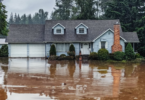Insurance for Natural Disasters: Essential Steps to Guarantee Your Coverage
Natural disasters can strike without warning, leaving significant damage in their wake. Many people often overlook the importance of having proper insurance coverage for these events. Understanding the right type of coverage can make all the difference in recovering from a disaster and rebuilding life as it was.
Getting the right insurance is crucial for protecting homes and belongings from natural disasters like floods, hurricanes, and earthquakes. Without adequate coverage, victims may face steep costs when disaster strikes, making recovery even harder. It is essential to know what to look for in a policy to ensure complete protection.
Being informed and prepared can save individuals from stress and financial burden in the aftermath of a disaster. This blog post will explore key aspects of natural disaster insurance and provide tips on how to ensure adequate coverage for peace of mind.
Key Takeaways
- Natural disaster insurance is essential for protecting homes and property.
- Knowing the types of coverage available helps in making informed decisions.
- Understanding policy details is necessary for adequate protection.
Understanding Natural Disaster Insurance
Natural disaster insurance is essential for protecting property and finances from unexpected events. It covers various types of disasters, assesses risk levels, and highlights the importance of knowing policy details.
Types of Natural Disaster Coverage
Natural disaster insurance can include several types of coverage. Common ones are:
- Flood Insurance: Covers damage from floods that standard policies usually do not cover.
- Earthquake Insurance: Protects against damages from tremors.
- Hurricane Insurance: Offers coverage for wind damage and flooding specifically caused by hurricanes.
Many homeowners’ policies may include some natural disaster coverage. However, separate policies or add-ons may be needed for full protection. It’s important for homeowners to know what each policy includes and excludes.
Assessing Your Risk for Natural Disasters
Determining the risk of natural disasters is crucial. Homeowners can start by examining their geographical area.
Factors to consider include:
- Location: Is it prone to floods, earthquakes, or hurricanes?
- Historical Data: Research past incidents in the area.
- Home Structure: Some building features can either increase or decrease risk.
Using local government resources or risk assessment tools can provide valuable insights. This information helps in choosing appropriate coverage.
The Importance of Policy Details and Exclusions
Understanding policy details is vital for effective coverage. Homeowners should read their policies closely. Key aspects include:
- Coverage Limits: Know the maximum amount an insurer will pay.
- Deductibles: This determines the amount a homeowner pays out of pocket before the insurance kicks in.
- Exclusions: Common exclusions can include damages from neglect or certain high-risk events.
Being aware of these details helps ensure proper protection. It also aids in making informed decisions when selecting or updating a policy.
Strategies for Ensuring Adequate Coverage
To protect against natural disasters, it is essential to implement effective strategies for insurance coverage. This includes regularly reviewing policies, considering additional options, and taking proactive measures to safeguard property.
Reviewing and Updating Your Policy Regularly
It is important to review insurance policies at least once a year. Changes in property value or personal circumstances can impact coverage needs.
- Home renovations or major purchases should prompt a review.
- Local risk factors may also change. For example, if the area becomes prone to flooding, additional coverage might be necessary.
When updating a policy, it is crucial to ensure all belongings are accurately listed. This includes items like electronics, jewelry, or collectibles. Keeping detailed records with photos can help in case a claim needs to be made.
Considering Additional Coverage Options
Basic homeowners or renters insurance may not cover all types of natural disasters. Specific risks like floods and earthquakes often require additional coverage.
- Flood insurance is usually sold separately. Standard policies do not cover flood damage, so adding this is essential in at-risk areas.
- Earthquake insurance can protect against structural damages.
Investing in these additional coverages can provide peace of mind. It allows homeowners to feel secure knowing they are protected from unexpected events that may not be included in standard policies.
Taking Proactive Measures to Protect Your Property
Taking steps to protect property can reduce risk and lower insurance premiums. Simple improvements can make a significant difference.
- Install storm shutters or reinforce roofing to withstand severe weather.
- Keep gutters clean to prevent water damage from flooding.
Creating an emergency plan is also beneficial. This includes having an emergency kit ready and knowing escape routes. Preventative measures not only help during disasters but also make properties more appealing to insurance companies.







Leave a Comment